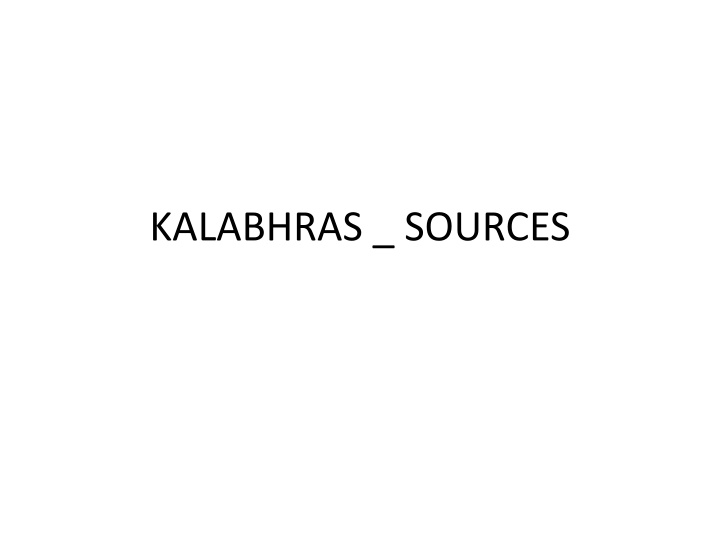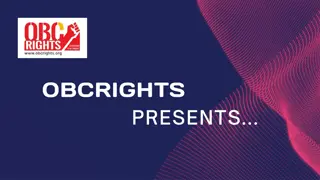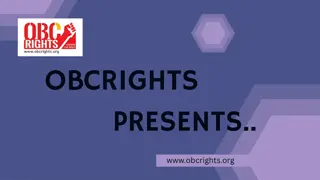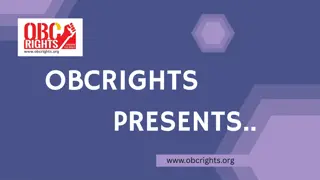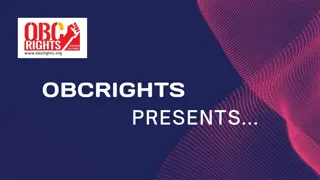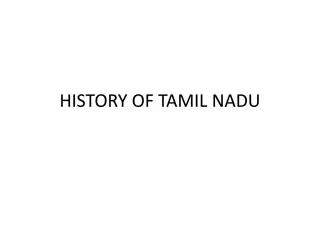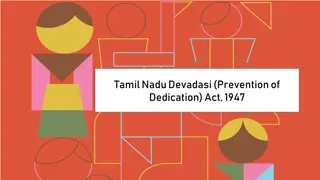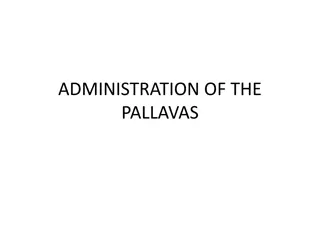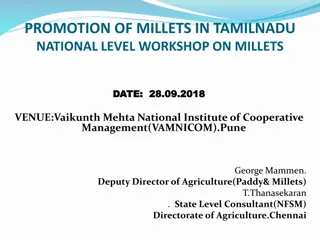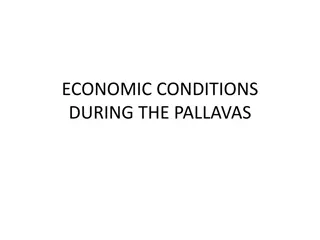Historical Overview of Kalabhras and Pallavas in Tamil Nadu
Towards the end of the 3rd century AD, the Kalabhras occupied the Tamil Country for about two and a half centuries, known as the Dark Age. Limited sources shed light on the Kalabhra rule, mentioning their influence on literature, religion, and script development. The Pallavas later drove out the Kalbhras and established their rule, leading to significant changes in art, architecture, and governance in the region. Literary sources like Tamil Navalar Charithai and archaeological findings provide insights into this crucial period in the history of Tamil Nadu.
Download Presentation

Please find below an Image/Link to download the presentation.
The content on the website is provided AS IS for your information and personal use only. It may not be sold, licensed, or shared on other websites without obtaining consent from the author.If you encounter any issues during the download, it is possible that the publisher has removed the file from their server.
You are allowed to download the files provided on this website for personal or commercial use, subject to the condition that they are used lawfully. All files are the property of their respective owners.
The content on the website is provided AS IS for your information and personal use only. It may not be sold, licensed, or shared on other websites without obtaining consent from the author.
E N D
Presentation Transcript
Kalabhras Towards the end of the 3rd Century AD , the Sangam period slowly witnessed its decline . The Kalabhras occupied the Tamil Country for about two and a half centuries . We have little information about the Kalabhra rule . The Pallavas in the northern Tamil Nadu drove the Kalbhras out of the Tamil Country and established their rule . Sources : Kalabhras had occupied the Tamil Country from the middle of the 3rd Century AD to the end of the 6th Century AD. This period was called Dark Age . Only limited sources are available for the existence of the Kalabhras .
The Literary sources for this period include Tamil Navalar Charithai , Yapperunkalam and Periyapuranam . The Tamil grammar Yapperunkalam refers to a Kalbhra king namely Achutha Kalappalan . The Velvikkudi and Dalavaipuram copper plates mention about the Kalbhras . The Incriptions at Thiruppugalur and Vaikunda Perumal temple in Kanchipuram also refer to the Kalabhra rule . Both Buddhism and Jainism became dominant religions during the Kalbhra period . New script Vattezhththu was develpoped during this period . Epics like Sivaka Chinthamani and Kundalakesi were written Scholars like Buddhadatta , Buddhaghosha and Bodhidharma lived during this period .
The Jain Palli ( school) at Thirupathirippuliyur remained an important educational centres during this period . Sarva Nandi and Vajra Nandi were the two great Jain scholars , who lived in this period End of Kalbhras : After the decline of the Mauryas , the Pallavas migrated to the Andhra region . Before coming to the Tamil Country , they stayed in the Andhra region for some time and served under the Satavahanas . They established the Pallava kingdom in Tamil Country by overthrowing the Kalbhras .
The Pallavas The period of Pallava rule is an important chapter in the history of the Tamil Nadu . Their rule had extended from 6th Century AD to the 9th Century AD . The Pallava kingdom was known as Thondai Mandalam . It extended from the River Krishna in the North to the river Palar in the South . The Pallava rule was significant in many respects . There was Religious revival as well as Literary growth . An excellent administrative structure had existed under the Pallav rule . The Pallavs had also effected important changes in the field of Art and Architecture .
Sources for the History of Pallavas The sources for the History of Pallavas were classified into Literary and Archaeological sources . The Literary sources are classified into Native and Foreign sources . Foreign Literary Sources The Foreign sources for the Pallava period include the Sri Lankan books , namely Deepavamsa and Mahavamsa . These books are written in Pali Language . They describe about the relationship between the Pallava king Narashimhavarman I and the Sri Lankan king Manavarman . The Chinese traveller Hiuen Tsang had visited the Pallava kingdom and his travel accounts are known as Siyuki
He had given a detailed account of the capital city of the Pallavas , Kanchipuram . And also he mentioned about the Buddhist Viharas in Kanchi and described the Social and Economic conditions of the Pallava kingdom . Native Literary Sources : The native literary sources are include both Tamil and Sanskrit literature . Tamil Literature The Tamil literature consisted of the songs composed by Alwars and Nayanmars , they lived during the Pallava period The compositionss of Alwars are known as Nalayira Divya Prabhandam . The songs of Nayanmars are compiled into Panniru Thirumurais . These works describes the Social and Religious life of the people during the Pallava rule . The Periyapuranam written by Sekkilar is also important literary source for this period .
Sanskrit Literature : Dandin and Loga Vibagam written by Sarva Nandi provide a lot of information about the importance of Simhavishnu and his rule . The famous Pallava ruler Mahendravarman I himself wrote the Mathavilasa Prakasanam in Sanskrit language . It provides information regarding the Social and religious condition during the Pallava period . Archaeological Sources : Copper Plates , Inscriptions , Monuments , Coins and temples Sculptures and other Monuments remain the important archaeological sources for the study of the Pallavas . The Allahabad Pillar Inscription of Samudra Gupta mentions about the Pallava king , Vishnu Gopa . The Aihole Inscription of the Chalukyan king , Pulakesin II gives details about the Pallava Chalukya conflict .
The Kenthoor Stone Carving of Keerthivarman belonged to the Pallava period . Apart from these popular inscriptions , there exist hundreds of Pallava inscriptions throughout South India . They depict the Military Achievements of the Pallava kings . The Kuram Copper Plates issued by Parameshwara varman and the Velurpalayam copper plates of Nandivarman III record their military achievements . The sources of the Pallava period remain useful Historical sources . ___________.
